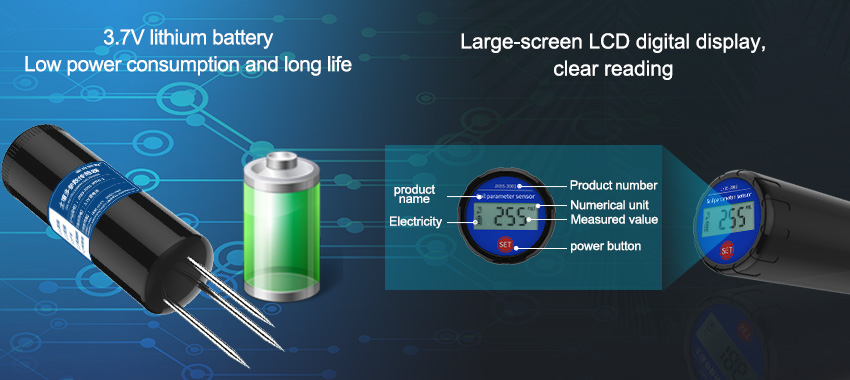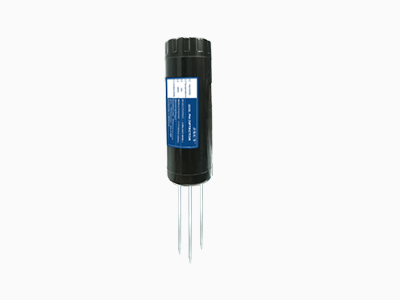Agriculture is the backbone of our global food system, and farmers play a vital role in feeding the world’s population. However, they face numerous challenges, including unpredictable weather patterns, limited water resources, and soil degradation. To address these challenges and maximize agricultural productivity, farmers need access to accurate and real-time information about their soil conditions. This is where soil monitoring using sensor systems comes into play. In this article, we will explore how sensor systems empower farmers by providing them with crucial data about their soil health, moisture levels, nutrient content, and more.

What are soil sensor systems?
Soil sensor systems are devices that are designed to measure various parameters related to soil health and quality. These sensors can detect factors such as soil moisture, temperature, pH levels, nutrient content, salinity, and even soil compaction. They are typically placed in the ground at different depths to provide a comprehensive view of the soil conditions.
Real-time soil monitoring:
One of the significant advantages of sensor systems is their ability to provide real-time data on soil conditions. Traditional soil testing methods often involve taking samples and sending them to laboratories for analysis, which can be time-consuming and costly. With sensor systems, farmers can get instant feedback on their soil health, allowing them to make timely decisions regarding irrigation, fertilization, and crop management.
Optimizing irrigation practices:
Water is a precious resource, and efficient irrigation is crucial for sustainable agriculture. By monitoring soil moisture levels in real-time, farmers can determine when and how much water to apply to their crops. Soil moisture sensors placed at varying depths can provide insights into water penetration and root zone moisture levels. This helps farmers avoid over-irrigation or under-irrigation, leading to improved water-use efficiency and reduced water wastage.
Precision nutrient management:
Nutrient management is critical for crop growth and yield. Soil sensors can measure key nutrients like nitrogen, phosphorus, and potassium in the soil. By monitoring these nutrient levels in real-time, farmers can adjust their fertilizer application rates and timing accordingly. This precision nutrient management reduces the risk of over-fertilization, minimizes nutrient runoff into water bodies, and improves crop quality.
Managing soil pH and salinity:
Soil pH and salinity are essential factors that affect nutrient availability and plant growth. Soil pH sensors can help farmers monitor acidity or alkalinity levels in the soil. This information enables them to take corrective measures such as adding lime or sulfur to adjust pH levels. Similarly, salinity sensors can detect excessive salt content in the soil, which can be harmful to crops. By monitoring salinity levels, farmers can implement appropriate irrigation practices and drainage strategies to prevent salt buildup.
Detecting soil compaction:
Soil compaction is a common problem faced by farmers, especially in areas with heavy machinery use. Compacted soil restricts root growth and affects water infiltration, leading to reduced crop yields. Soil compaction sensors can identify areas of compacted soil and help farmers take remedial measures such as deep tillage or subsoiling. By addressing soil compaction, farmers can improve soil structure, enhance root development, and optimize crop productivity.
Weather-based decision making:
Sensor systems can also integrate weather data to provide comprehensive insights for farmers. By combining real-time soil data with weather forecasts, farmers can make informed decisions regarding planting dates, crop selection, pest control, and more. This integrated approach helps farmers adapt to changing weather patterns and minimize risks associated with extreme weather events.
Data-driven farming:
Sensor systems generate a vast amount of data, which can be analyzed to gain valuable insights. By using data analytics and machine learning techniques, farmers can identify trends, patterns, and correlations in their soil conditions. This knowledge can aid in long-term planning, yield forecasting, and identifying areas for improvement. Moreover, sharing anonymized data with researchers and agronomists can contribute to the development of best practices and innovations in agriculture.

Challenges and considerations:
While soil sensor systems offer immense benefits, there are some challenges to consider. Cost can be a significant barrier for small-scale farmers, as sensor systems can be expensive, especially when multiple sensors are required to cover large areas. Additionally, ensuring the accuracy and reliability of sensor data is crucial. Regular calibration and maintenance are necessary to avoid erroneous readings and data misinterpretation. It is vital to provide adequate training and support to farmers to ensure proper installation, usage, and interpretation of sensor data.
Conclusion:
Real-time soil monitoring using sensor systems has the potential to revolutionize modern agriculture by empowering farmers with valuable information about their soil conditions. By optimizing irrigation practices, managing nutrients, addressing soil compaction, and making data-driven decisions, farmers can enhance productivity, conserve resources, and minimize environmental impacts. However, it is essential to address cost barriers, ensure data accuracy, and provide necessary support to maximize the adoption and effectiveness of soil sensor systems. With continued advancements in technology and increased accessibility, sensor systems have the potential to transform farming practices and contribute to a sustainable and food-secure future.
